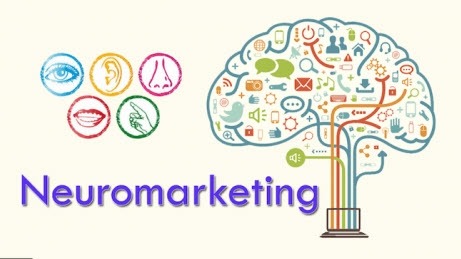
Neuromarketing is a relatively new branch in the marketing sector. It uses knowledge from neuroscience to develop efficient marketing campaigns. That may sound very abstract. What you actually achieve with neuromarketing is that you gain insight into what goes on in someone before he makes a purchase.
You get an idea of how the brain of a (potential) customer reacts to different marketing stimuli. The ultimate goal is to find the most efficient communication methods that can influence consumers' decision-making process.
Neuromarketing combines knowledge from traditional marketing with neuroscience and psychology. It looks at how people's brains react to certain impulses linked to a product, a brand, or an advertisement. That knowledge can help to understand why someone is making a purchase. If you know that, you can adjust your marketing campaigns accordingly.
your marketing campaigns accordingly.
Research
The founder of neuromarketing is a professor of marketing research at Erasmus University Rotterdam, Ale Smidts. His current research focuses on neuroscience and neuromarketing, which processes in the brain are responsible for the decisions made by the consumer and the influence of marketing actions on this decision-making process.
In 2002, Smidts said during his inaugural lecture as a professor that the goal of this discipline is better to understand the customer and her response to marketing incentives. This is done in neuromarketing by directly measuring the processes in the brain.
Understanding how a customer responds to a particular incentive can help you design more effective marketing activities. In other words: you increase the effectiveness of your marketing campaigns with neuromarketing by studying the brain responses.
Color or sound
Companies often use customer satisfaction surveys. But the question: 'do you like this product?' usually does not really give an answer that will help you.
With the help of neuromarketing, you can gain insight into whether a customer reacts to the color of the packaging, the sound the product makes when you shake it, or whether they experience a certain emotion when they look at the product.
Why do you buy croissants?
Companies are interested in neuromarketing because traditional methods are not efficient enough. Marketers realize that traditional marketing pays too little attention to important aspects that play a role in making a purchase, such as emotions or memories.
A decision to buy or not does always have a rational background. After all, you don't just buy something because you need it. A simple example, do you not get your holiday memories of France back when you buy croissants? Or do you only buy those croissants because you're hungry and haven't had breakfast yet?
Want to learn more about the principles of neuromarketing? Watch the video below by Tonny Loorbach, in which he goes deeper into influencing the subconscious mind.

Different techniques in neuromarketing
Various techniques are used to gain insight into what is happening in the brain. With these technologies, you can see what happens in the brain at a neurocognitive level in response to specific stimuli.
Functional MRI scan (fMRI):
MRI stands for Magnetic Resonance Imaging. This is a brain study in which the brain's activity on a computer can be seen in a three-dimensional image. For example, test subjects are shown products or advertisements, after which brain activity will be seen in certain areas of the brain. Each area in the brain represents a particular emotion.
Facial coding:
Human emotions are measured by looking at facial expressions. It is possible to recognize these with certain computer algorithms. Thus, a computer can recognize whether someone's face expresses happiness or sadness after exposure to a certain stimulus.
EEG:
Brain activity is measured electrically with an electroencephalogram. Electrodes that sit like a helmet on the head register electrical activity in the brain and change due to exposure to stimuli.
Eye Tracking:
The focus point of the subject's eyes is measured. What is he actually looking at? This is useful, for example, when presenting a product. Is the consumer too distracted from the product by the environment? Does he look at your product or not?
Not everything is known yet.
The development of neuromarketing is closely related to the development of neuroscience. Not everything is known about how the human brain works. It is therefore also not possible to determine exactly how our brains respond to specific marketing stimuli.
But it is known which areas of your brain are responsible for experiencing emotions, where your memories are stored, where the feeling of happiness comes from, and so on.
It is possible to obtain a lot of accurate data about the human brain and brain activity. But not all of this data can be converted one, two, three into a specific marketing campaign.
Determine the optimal price
A growing number of companies are now specializing in neuromarketing. And a growing number of companies are using this form of marketing because a lot can already be achieved.
For example, based on the brain's activity, you can measure what price your customer is really willing to pay for your product. With the help of an EEG, brain activity is monitored, and it can be deduced at what price the consumer is most comfortable. Moreover, it is not automatically the case that a low price results in a satisfied consumer.
Do you want to delve further into this, and do you want to generate more sales through neuromarketing? Then watch the video below by Tonny Loorbach. Personally, it helped me a lot with my marketing campaigns.
Finding latent need
You can also search the brain for a latent need for an innovative product with the help of neuromarketing techniques. In the brain, the emotions of desire, expectation, and trust can be found with the help of MRI scans.
If a new product evokes one of these emotions in the consumer, a reaction can be seen on the scan. The intensity of the emotions can also be measured. You can use this information in your marketing strategy by specifically addressing these feelings.
Subliminal communication
Neuromarketing has nothing to do with so-called subliminal communication or subliminal messages. These are messages that you do not consciously see but that you unconsciously pick up somewhere and still end up in your brain.
This could induce you to make a purchase unnoticed, for example. In the 1950s, James Vicary experimented with subliminal messages. He stated that he repeatedly showed 'drink coca cola' and 'eat popcorn' for a split second during the film in a movie theater.
After this, the sales of popcorn would have increased by more than 18% and cola sales by almost 60%. In retrospect, the investigation turned out to be untrue. But the idea has stuck with people, and research is still being done on these unconscious messages.


